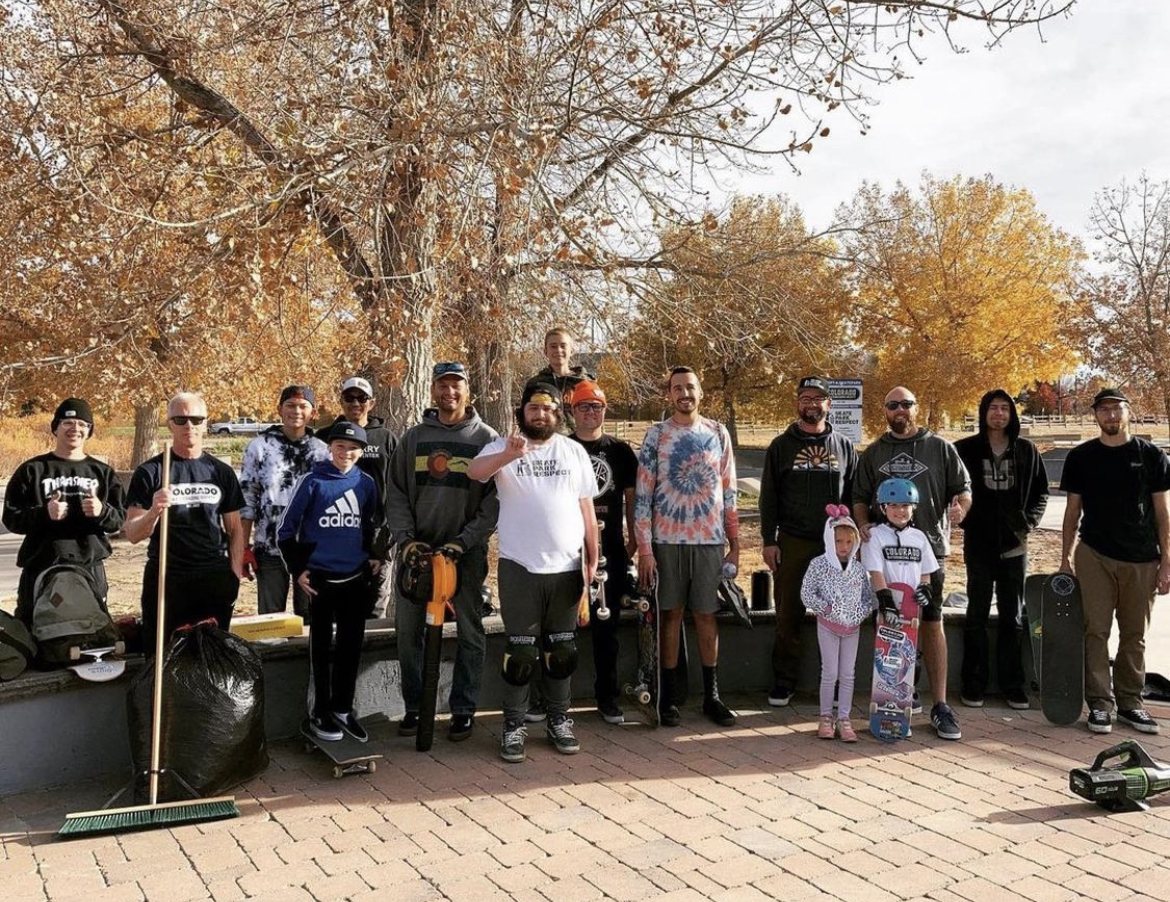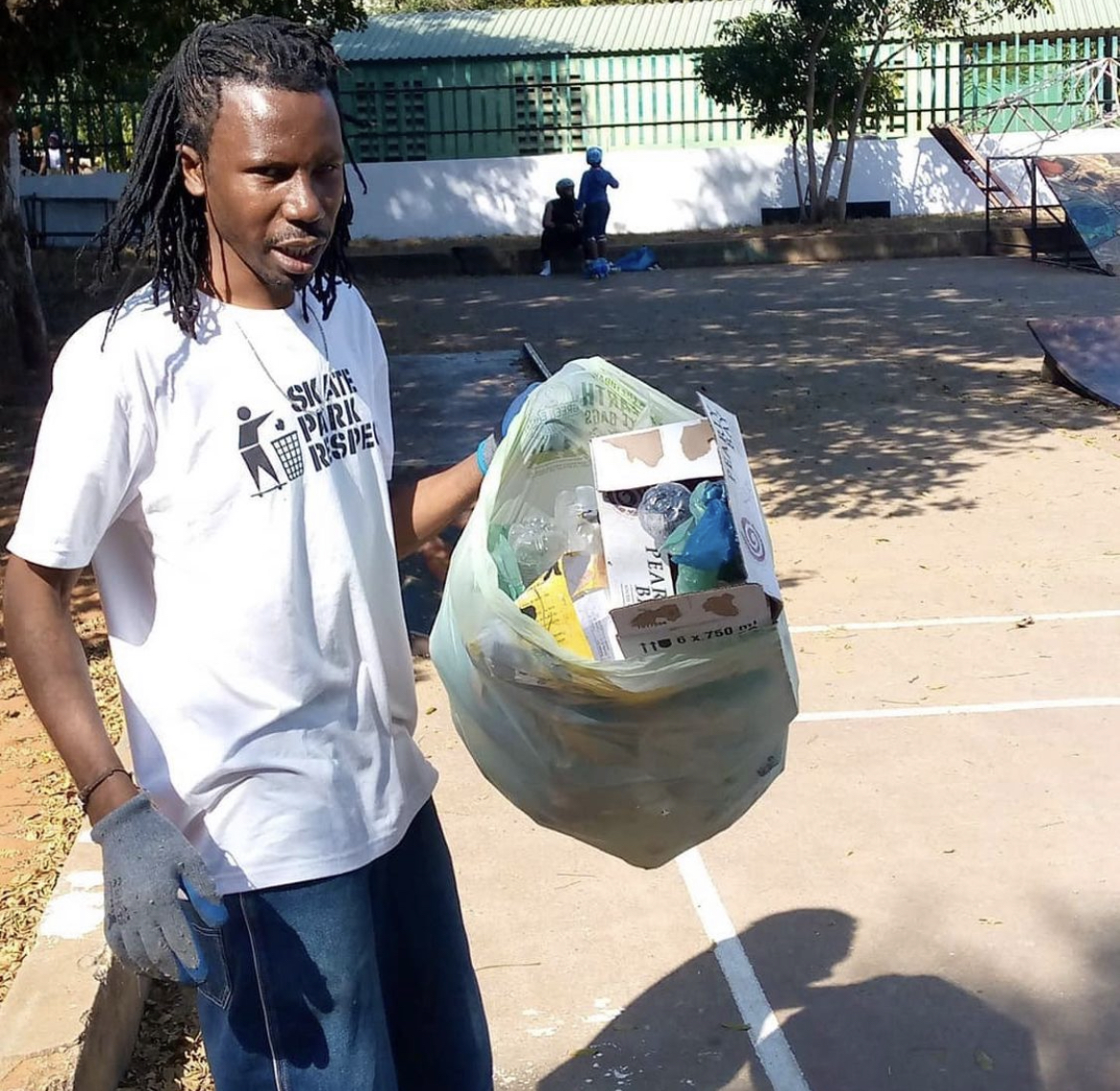Trucks and Fins is a huge present to the whole skate community - not just for the skating people, but also for shops, builders and schools. Super easy to use and can't believe how complete it is.
Pascal Lieleg aka Official Bowlshit
The numbers talk for themselves: 26637 pounds of trash (12.082 kg) collected, almost 3000 hours of cleaning, 130 ambassadors around the world, 130 skateparks with regular interventions and hundreds of anonymous people who just want to have a better place to skate, or to be. Steve Zanco often reminds us of the broken window theory. When a sign of vandalism is there and you do nothing, other windows will be broken, and it will escalate. The president of this non-profitable organization explains us how he and his ambassadors are reversing the cycle. This is much more than just pure love for skateboarding. This is all about community.

All the above. Skateparks tend do be a place to hangout and for the most parks the riders do take care of the place, but they are some that don’t.
Skaters and all the folks who enjoy the park are de real champions. The city hall puts all the money, get things built and often contract cleaning parks out, but the real day-to-day maintenance should be done by the people who enjoy it. When riders realize this is an amazing gift, they treat them like that. When skaters really care and step up that’s when real change happens.

Zero (he laughs). The cities take care of the landscaping and other recreational areas… those tend to take priority, not the actual skatepark.
It has happened and things can escalate. When it happens we have a conversation with the folks and explain the reasons why it’s important to keep it clean or the reasons to not tag it up. We really explain that these things can be closed, this can be taken away quick. There are times when folks get all grumpy about it, and we try to fight that message. When they realize that their actions are direct reflectors of what happens at the parks and if it stays, they tend to say ‘I’m sorry, my bad’.

It tends to be younger, twelve/thirteen to mid-twenties.
There was one in Denver. It snowed until an hour before the event. We were really worried. But we had the support of local groups, city hall, the park rangers and we had over fifty volunteers, plus an extra fifteen from the city hall with blowtorches, shovels... We got rid of well over fifty full bags of trash and we also did some landscaping’s and removed graffiti. It was an all hands and deck operation. The place was spotless and we were able to skate that day. Afterwards our ambassadors became the stewards of that park.

There is a bit of a conversation and we ask them questions. We just want them to clean the park. Of course, we can’t control what happens all over the world but finding individuals who want to support the cause is huge. We encourage them to clean up their parks, we don’t ask them to do anything crazy.
We started in the USA but when Covid hit we weren’t able to do clean-ups, travel, do a lot of things, so we looked for other opportunities to continue the movement, but without us necessarily being there all the time. There were a lot of amazing people around the world that were reaching out and saying ‘hey, how can we be part of this?’; ‘how can I do this in my area, do you have any tips?’ We were creating these relationships and creating the ambassador program. Our goals for the ambassador program are to encourage them to share their information, their stats: how many pounds of trash did you pick up; how many hours do you spend; do you have a bunch of volunteers? Who did you talk to? Do you have good stories? The park was about to be closed but we fought for that; Our goals are to spread the message and encourage people to do something little like pick up a piece of trash.

I’ve been in Japan a lot and it’s incredible. You don’t see any trash cans and there is no trash. I went on the train there and somebody did a graffiti. At the next stop, with no extra time, a group of folks came on, cleaned it, got rid of the graffiti and the train didn’t miss a beep. It’s their culture of respect. They appreciate what they have. Their culture is unique, they see the things they have as a gift and respect others property. That’s a cool mindset.
We have 130 ambassadors and we have removed 26637 pounds of trash (12.082 kg), almost 3000 hours of cleaning and 130 skateparks. It’s growing all the time. We’re shipping out kits constantly to our ambassadors with trash pickers, trash bags, scrapers and gloves, we have also a how to clean a skatepark guide.

City Halls really ask these questions. The primary answer is to partner up with the community. If that means we have ambassadors, great! If not, really have a presence there. Show the skaters that the city cares. The locals must have the same conversations and say ‘hey, this is an amazing gift, if you show that you care the city’s going to partner with you and you get more obstacles, constant maintenance, improvements, upgrades and making an easy and symbiotic relationship. Working with the locals is where the real value comes from.’
We do. We have a few educational programs that we currently have running. With after school programs we educate kids how to keep things clean and give basic skate education as well: taking care of your board, how to take care of this place. It's about respect as a whole, respecting your things and others. We are working with the concrete industry too, to increase the awareness of the concrete trade.
That depends of the support of the city. I try to reach them saying ‘this needs to be fixed, can we help anyway?’ We recently had one that 75 volunteers repaired every crack in the concrete. We had tons of epoxy, we went there with tubes, scrapers, we had all this high school kids helping, it was really good. But it’s all about working with the city because you can’t do it on your own. Sending a text message or a picture to someone, create collaborators.

‘Sad’. Because it’s so easy to clean these things. It just takes a little effort.
The stereotype is still there, but it’s better now. The Olympics are helping, Tony Hawk and the Skatepark Project have been a huge advocate for that too, but it still exists. Some folks in the city and in the community still think skateboarders are just doing drugs all the time, tag things up and want to wreck things… But it’s not like that…
Being a better person, perseverance, mental toughness, all these things are skateboarding. It’s an accepting community, it doesn’t matter who you are, your believes, religion, just let’s skate. Those things are changing in people’s minds, but it still exists in the older crowds that are not exposed to skateboarding. We try to show the positive side of it, we’re here to help de community.

Join the Trucks and Fins community and receive exclusive news, giveaways, access to subscribers-only
-contests, discounts from our partners and much more directly from us!

Trucks and Fins is a huge present to the whole skate community - not just for the skating people, but also for shops, builders and schools. Super easy to use and can't believe how complete it is.
Pascal Lieleg aka Official Bowlshit

Trucks and Fins is a great resource for checking on local spots if you are traveling or planning a road trip! A one stop resource that is constantly updated with the newest projects as well as those bucket list locations worldwide. The intuitive UI features gps coordinates as well as useful information about shops nearby.
Architect Betonlandschaften

Trucks and Fins provide a great service. Its quick and easy to use and has such a vast amount of parks included, not just in the UK but worldwide. CANVAS Spaces support the cause and fully back what they are doing.

Our skate community has been crying out for a comprehensive guide to global skate spots. Trucks and Fins should be commended on their dedication to mapping the world's STOKE!
Maverick Skateparks

Trucks and Fins brings all of the world's skateparks to you all in one convenient place through their endless search for parks around the world. They have park locations, details, images, and more to help plan your next skate quest wherever that may take you. We appreciate their dedication and passion for skateboarding and the amazing gifts that skateparks and skate spots are.
Steve Zanco, Skatepark Respect

A big part of skateboarding is about finding Animal Chin - your spirit animal, or in other words: whatever gets you stoked. Could be the right people to roll with, or that special dream terrain. Trucks and Fins has all the best skate destinations in one place; a map of stoke in your hands.
Jan Kliewer, Yamato Living Ramps